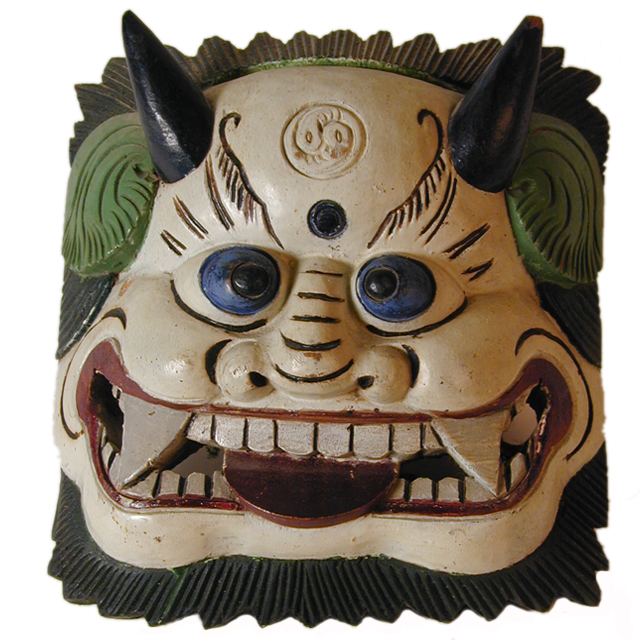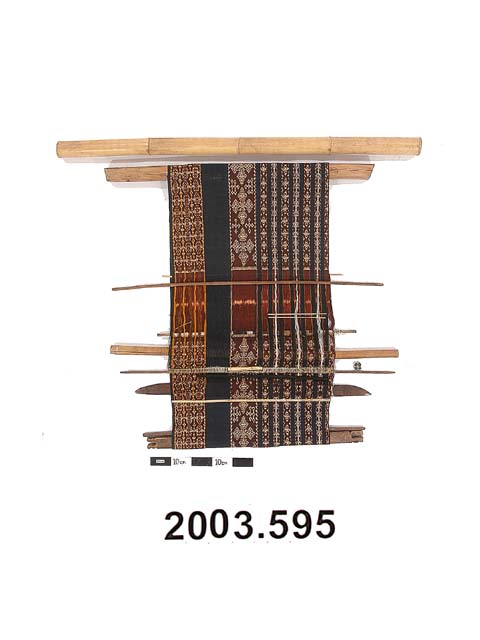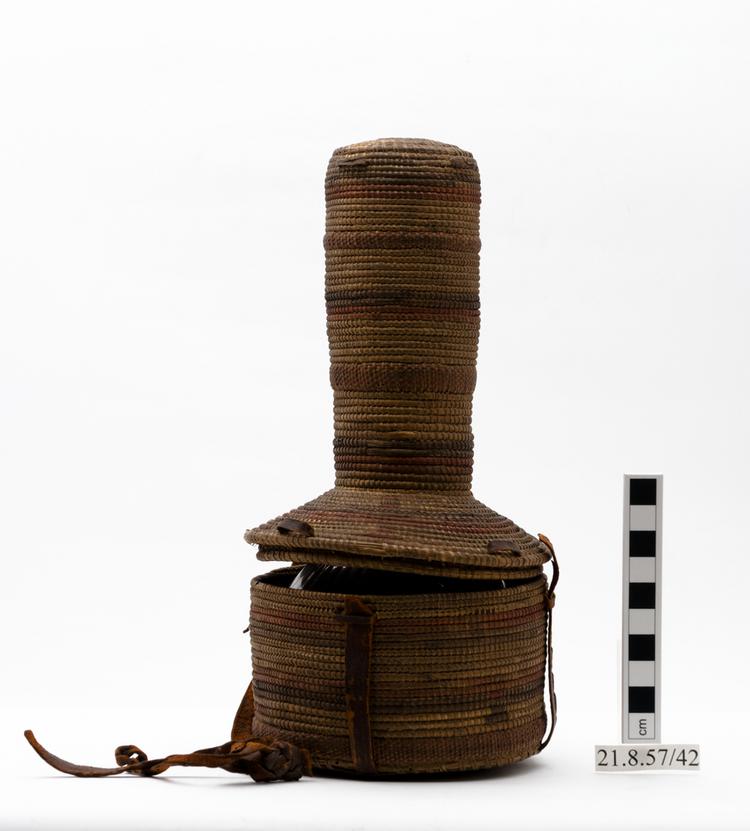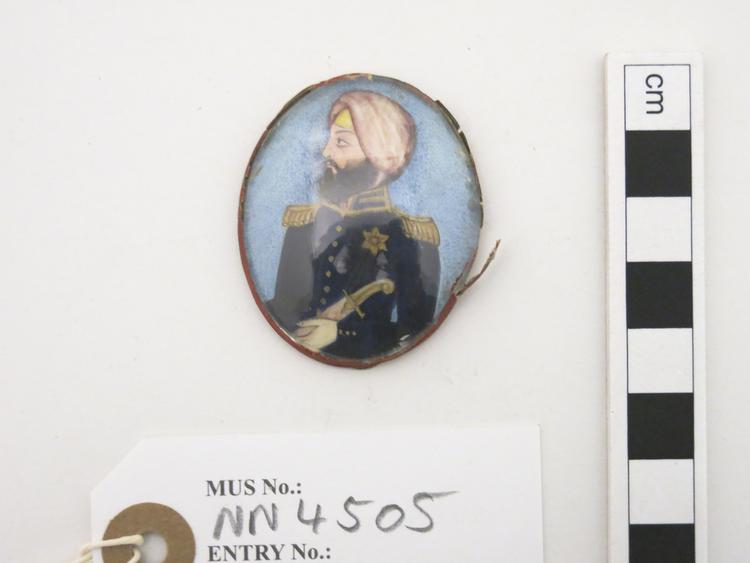
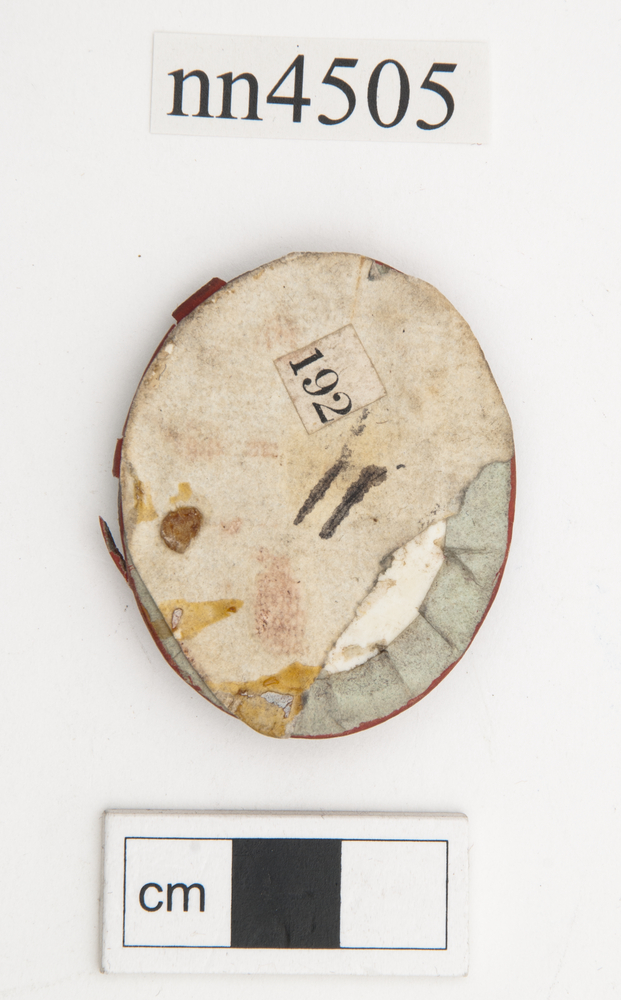
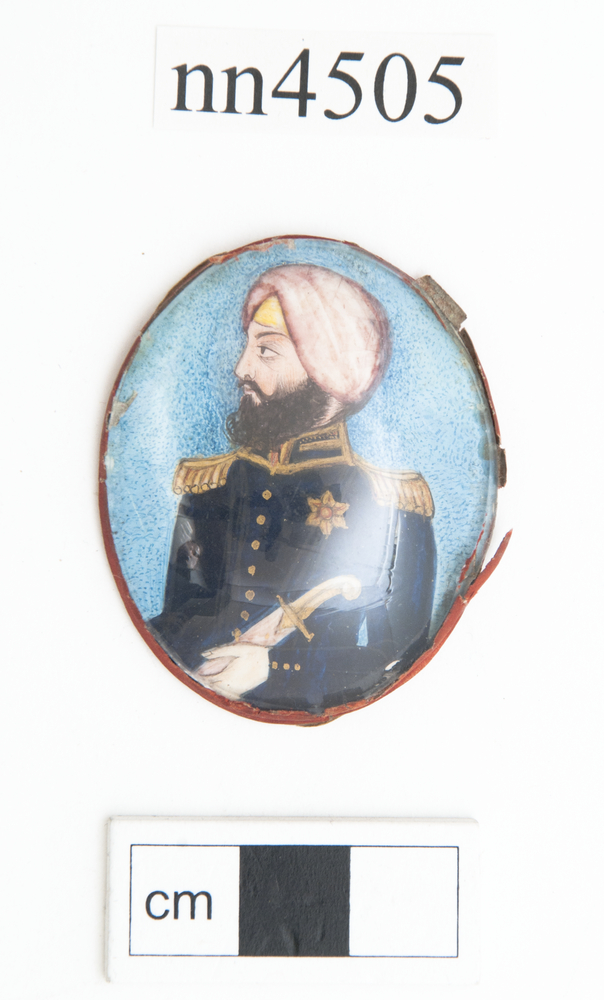
Miniature picture on paper depicting a Sikh officer of the Khalsa Army wearing a European-style uniform. Gouache (possibly heightened with gold) on ivory.
Visitors to Maharaja Ranjit Singh's dominions spoke of the splendour of his cosmopolitan court. The Sikh ruler was able to rise above the communal prejudices of his times and treated all his subjects on an equal footing. Competent individuals from all backgrounds—Sikh, Hindu, Muslim and Christian—occupied senior posts as administrators, courtiers, generals and governors. The maharaja's egalitarian character and pragmatic approach towards realising his ambitions created a superbly trained, modern Khalsa Army made up of all manner of warrior tribes and nations. Hindu Gurkhas, Biharis and Oriyas, as well as Muslim Punjabis and Pathans, were skilfully blended together with the Sikhs to form nineteenth-century Asia's most formidable fighting force. While his campaign generals were all members of Punjab's new nobility, the men were drilled and marshalled by several dozen foreign mercenaries; former Napoleonic generals, English deserters from the ranks of the East India Company, along with Italian, American, Spanish, German, Irish and Greek soldiers of fortune, all contributed to the Khalsa Army's uniquely cosmopolitan fusion of military cultures. This Sikh officer of the Khalsa Army wears a European-style uniform. The British were highly impressed by the fighting prowess of such men when they fought during the Anglo-Sikh Wars (1845-49). In the aftermath of the annexation of Punjab in 1849, the British raised battalion after battalion of Sikh forces into the East India Company’s armies. The painting can be dated to around 1850-60 and was probably completed either at Lahore or Delhi. Dignitaries, local rulers and colourful characters were standard subjects for ‘Company paintings’ in the Punjab. Their principle customers were Europeans living and working in the India subcontinent.




